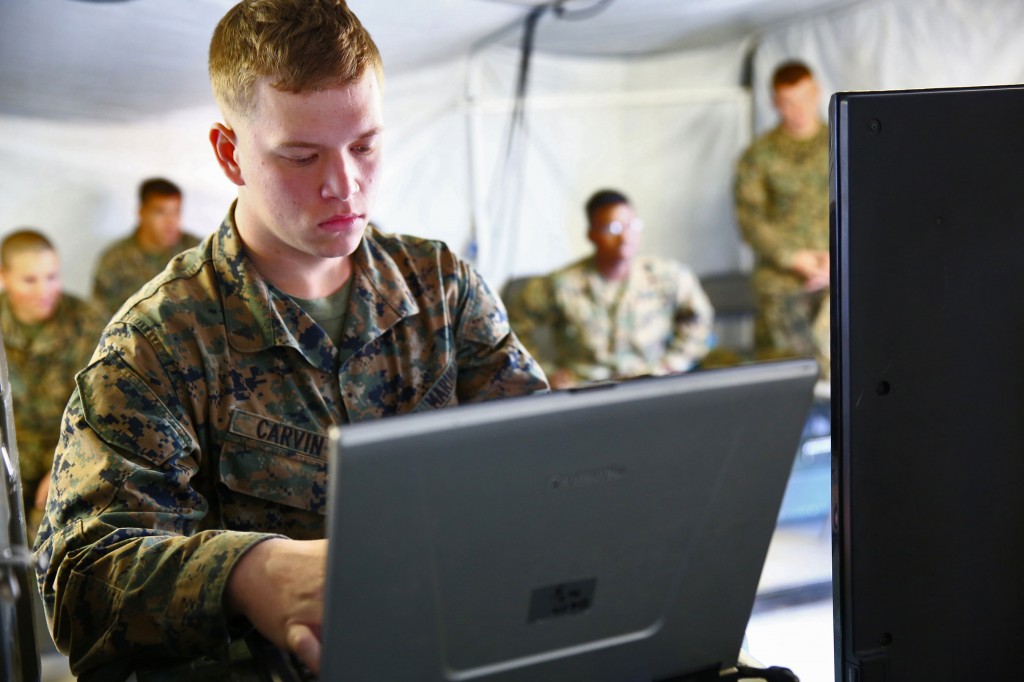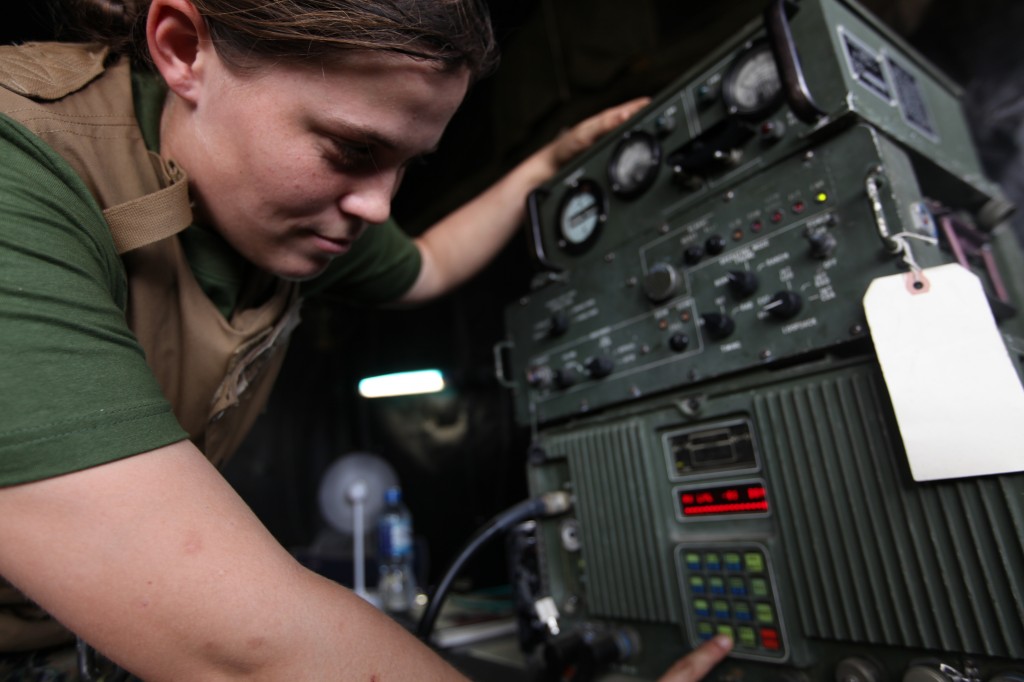
WASHINGTON: When Americans were threatened during the civil war in South Sudan, Marine Corps MV-22 Ospreys flew a Marine response force from Spain to Djibouti in a non-stop flight of 3,200 nautical miles – the distance from Alaska to Florida. That’s an extraordinary feat for an aircraft that can take off and land vertically like a helicopter.
But “when they got out of that airplane, it was just like they were flying in a Vietnam CH-46 [helicopter],” Brig. Gen. Matthew G. Glavy, the Marine’s assistant deputy commandant for aviation, said during a presentation at the Center for Strategic and International Studies. Why? Because the crew had no access to the computer networks that the modern US military uses to share intelligence and plan operations. While chatter on a radio can provide a basic update, you need bandwidth to get detailed data on a rapidly changing situation on the ground. A recent experiment put working WiFi in the back of a V-22, but that’s just the first step towards what’s possible.
“As V-22s come into a landing zone and take fire – [picking up] ‘hostile fire indications’ – we have systems that can detect that. [But] those systems talk to nothing,” Glavy said. “What if those systems talked to each other and maybe talked to the raid force commander….so he has fresh data, not information but knowledge, on where the enemy is and what they’re doing?”
Replacing old aircraft with better ones is a major improvement, but it’s additive. “One plus one equals two,” Glavy said. Network those systems and that “is where one plus one equals 22.”
“The guys at Pax River” – home base for Marine Corps and Navy test pilots – “don’t like this conversation,” said Glavy, a CH-46 pilot himself. But Glavy’s boss, Deputy Commandant for Aviation Lt. Gen. Robert Schmidle has been pushing hard, Glavy said. “Let me tell you,” he said with a chuckle, “the knuckle-dragging -46 pilot is being dragged along.”
Nor is this emphasis on networks a passing fancy likely to get lost in the shuffle of new commanders – Schmidle is moving on to the Pentagon’s Cost Analysis and Program Evaluation (CAPE) office – or shrinking budgets. To the contrary: “Distributed” operations by widely dispersed, rapidly maneuvering small units, coordinated over robust communications networks, is central to the Marine Corps’ new concept of future operations, released just last month, called Expeditionary Force 21.

A young Marine works on a digital radio.
Old-fashioned procurement & new-wave adversaries
The two-pronged problem is how to build the battlefield networks so that they can survive sequestration, rapid technological change, and the high-threat environments envisioned in Expeditionary Force 21.
“It’s all about waveforms and networks,” Glavy said. “We’re spending a lot of time and energy [on] the ability to have multi-waveform, multi-channel interconnectivity with the MAGTF [Marine Air-Ground Task-Force].” But the Marines can’t run their network programs as they have done in the past, he warned.
“The classic Marine Corps way to do this is set a standard,” Glavy said. “[For example], ‘variable Message Format will be the standard!’ We tried to do that four years ago. It was a terrible failure, because everything’s changing, changing so quickly.”
The issue is primarily the proliferation of different “waveforms,” the various protocols that modern digital radios use to share information. “All these waveforms…there’re so many out there that it’s so hard to say, ‘this will be the standard,'” Gavy said. “We’d love to buy Link-16 for all my friends,” he added, referring to the NATO standard for secure datalinks, but, cost aside, such an investment would commit the service to a single standard while technology evolved past it.
So the Marines’ new approach, said Glavy, is “can’t beat ’em, join ’em”: Instead of one standard for once and for all, what’s needed is a “Rosetta Stone gateway capability” that can translate quickly from one waveform to another. Yes, he admitted, translating everything requires more processing power than sticking with a single standard, but Moore’s Law means processing power gets cheaper all the time. “If you can do this [waveform-to-waveform translation] in a software reprogrammable format,” Glavy added, “you’re not tied to black boxes” — that is, to specific hardware from specific contractors.
Traditional procurement practices are not the only problem: So is the enemy, whom Expeditionary Force 21 predicts will be far more technologically savvy than the Taliban. In Afghanistan and Iraq, the US military has relied heavily on satellite communications, but that’s “the easy answer,” Glavy said. Since SATCOM is vulnerable to enemy anti-satellite weapons and old-fashioned jamming, for example, the Marines are experimenting with low-altitude networks that link RQ-21 drones and manned aircraft directly with line-of-sight transmissions.
“We’re going to continue to go down this technology trail,” Glavy emphasized. “We’re not going to be dependent on it.” Ultimately, if the enemy shuts down the whole network, Marines need to be proficient with a handheld compass, paper maps, and operate on their own initiative.
“What will always be in place in the Marine Corps, technology or no technology, is commander’s intent,” Glavy said. “Every Marine leaves the planning session” – be it for a brigade or a platoon – “with the commander’s vision for success. That will always be the ace in the hole.”
Move over FARA: General Atomics pitching new Gray Eagle version for armed scout mission
General Atomics will also showcase its Mojave demonstrator for the first time during the Army Aviation Association of America conference in Denver, a company spokesman said.


























